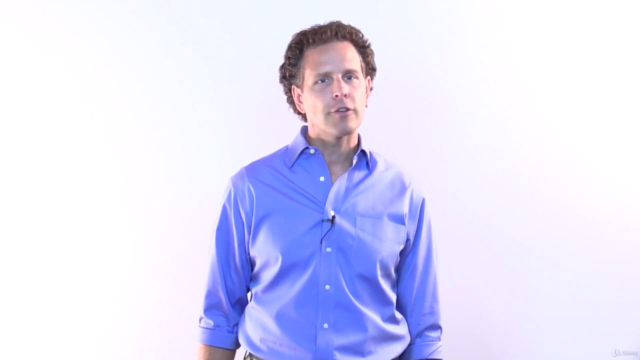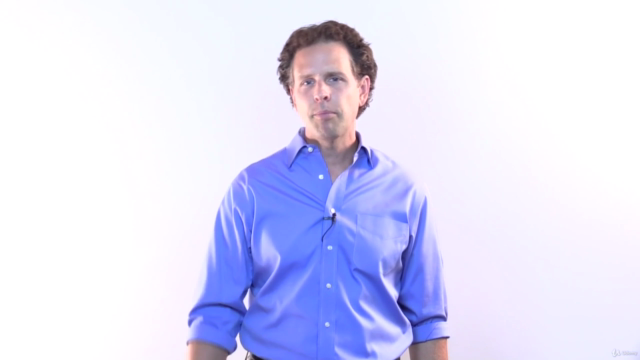Jason Teteak's 1-Hour Public Speaking & Presentation Skills

Why take this course?
🌟 The Presentation "Wow Factor" Explained 🌟
The "Wow Factor" in presentations is that special touch that elevates your presentation from good to great, from forgettable to memorable. It's the element that not only captures your audience's attention but also leaves a lasting impression on them. Achieving this doesn't require any special talent; it's about following a structured and strategic approach to your presentation design and delivery.
Here's how you can create and deliver an amazing presentation using the 21-Step Presentation Plan:
1. Define Your Presentation's Goal: Start by understanding what you want your audience to know, feel, or do as a result of your presentation.
2. Know Your Audience: Tailor your content, tone, and approach based on who you are speaking to.
3. Organize Your Main Points: Develop a clear structure for your ideas. This will help your audience follow along and understand the flow of your presentation.
4. Craft Your Opening and Closing: Your opening sets the tone; your closing leaves a lasting impression. Make them both memorable.
5. Design Engaging Slides: Use visuals to complement your message, not overshadow it. Remember, your slides should be a guide, not the entire show.
6. Practice Your Presentation: Rehearse until you can confidently deliver your presentation without notes. This will help you stay relaxed and connected with your audience.
7. Engage Your Audience: Involve your audience by asking questions, using interactive elements, or encouraging discussions to make the experience more dynamic.
8. Use Stories and Anecdotes: Stories can bridge the gap between logic and emotion, making your presentation more relatable and impactful.
9. Maintain Eye Contact: Look at your audience to establish a connection and keep their attention focused on you.
10. Master Your Vocal Delivery: Use your voice effectively by varying your pitch, pace, volume, and tone for emphasis and clarity.
11. Handle Technology with Confidence: Be proficient with any equipment or software you'll be using to avoid technical difficulties.
12. Manage Your Presentation Anxiety: Use techniques like deep breathing, visualization, or positive affirmations to stay calm and composed.
13. Use Humor Appropriately: If appropriate for your audience and topic, use humor to keep the presentation lively and engaging.
14. Be Mindful of Your Body Language: Use open, confident gestures and avoid distracting movements or postures.
15. Incorporate Visual Aids Sparingly: Use charts, images, and videos only when they enhance your message, not as a crutch for weak content.
16. Be Prepared to Answer Questions: Anticipate questions your audience might have and prepare answers in advance.
17. Keep It Simple and Clear: Avoid jargon and overly complex language that might confuse your audience.
18. Use Transitions Effectively: Move smoothly from one point to the next to keep your presentation flowing naturally.
19. Leave Time for a Q&A Session: This allows your audience to engage with you and clarify any points they found confusing or intriguing.
20. Conduct a Dry Run: Test your presentation in advance, ideally in the actual venue if possible, to ensure everything works as planned.
21. Reflect and Improve: After your presentation, reflect on what went well and what could be improved for next time.
By following these steps, you can craft a presentation that not only conveys your message effectively but also resonates with your audience in a meaningful way. Remember, the key to achieving the "Wow Factor" is preparation, understanding your audience, and delivering your content with confidence and clarity. 🎙️✨
About Your Instructor: Jason Teteak, an International Public Speaking Coach, TEDx Speaker, and Best Selling author, has revolutionized the approach to effective communication for over a million students around the world. His method, The Rule the Room Method, is all about practical, actionable techniques that deliver immediate results. Jason's engaging style and original methods have earned him recognition in the medical software industry and beyond. He's known as "trainer of trainers of trainers" and continues to influence and empower presenters worldwide. 🌟
Handling Audience Questions and Engagement:
When it comes to handling questions during or after your presentation, here are some key strategies:
- Prepare for Tough Questions: Anticipate possible difficult questions and prepare thoughtful responses ahead of time. This will help you stay calm and confident when they arise.
- Listen Actively: Show that you are genuinely interested in what your audience has to say by maintaining eye contact, nodding, and providing verbal affirmations.
- Be Patient and Clear: Take a moment to think before answering a question. This ensures your response is informative rather than reactive.
- Keep Answers Concise and Relevant: Provide clear and direct responses that address the question without going off on tangents.
- Redirect Off-Topic Questions: If a question doesn't align with your presentation's goals, gently steer it back on track by saying something like, "That's an interesting point which we can certainly explore after the presentation or during the Q&A."
- Encourage Follow-Up Conversations: Acknowledge that some questions may require further discussion and offer to continue the conversation after the session or through other means.
- Close with Gratitude: Thank your audience for their engagement, whether it was through asking questions, participating in activities, or providing feedback. This reinforces a positive connection and leaves a favorable impression.
By incorporating these strategies into your presentation style, you'll be able to handle audience interactions confidently and enhance the overall impact of your presentation. 🗣️💡
Course Gallery




Loading charts...